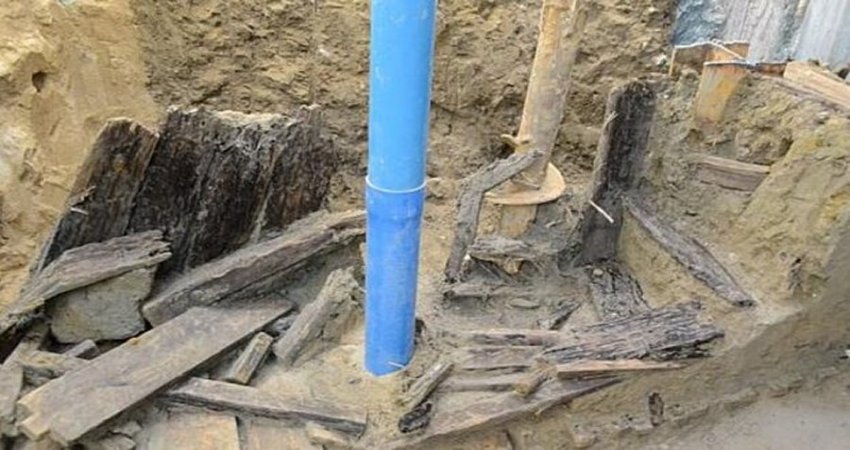Woolly Mammoth Bones Uncovered By Accident By Two Farmers In Lima Township, Michigan
MessageToEagle.com – While working to drain water from the land, two farmers in Lima Township discovered remains of a woolly mammoth.
The bones were first discovered on Monday, in what amounted to pure accident.
Neighbors Trent Satterthwaite and James Bristle, both farmers, were on Bristle’s farm on Scio Church Road in Lima Township, working to drain water from part of the field, reports Detroit Free Press.

They had dug about 8 feet deep when a wood-like substance started to appear. Pretty soon they realized the wood was actually bone and contacted the University of Michigan.
About 15 people from the university arrived with several others showing up to observe. Satterthwaite and a local excavator, James Bollinger, lent their help with some heavy equipment.
Together, they uncovered a surprising 20% or so of the woolly mammoth’s skeleton. There was the head and tusks, several ribs, a set of vertebrae from woolly mammoth.
¨While there have been about 30 woolly mammoths found in Michigan, only five or fewer have been uncovered so extensively”, Fisher said.“We didn’t stop to eat or drink,” he added. “It was a hard, hard day of work, but every bit worth it.”
After a full day of digging through a soybean field near Chelsea, researchers at the University of Michigan confirmed two farmers’ fairly unusual discovery: a large set of bones belonging to a woolly mammoth.

“The find Thursday afternoon represents one of the more complete sets of woolly mammoth bones everto be found in the state,” said Dan Fisher, a professor at the University of Michigan and the director of the Museum of Paleontology.
“It’s a pretty exciting day,” James Bollinger, an excavator and local resident who lent his services to the dig,” said. “I’ve been digging for 45 years and I’ve never dug anything up like that.”

This particular mammoth was likely killed by humans 10,000 or 15,000 years ago, then stored in a pond, which was a preservation technique at the time. Many of the missing parts were probably eaten by humans, Fisher said.

And the mammoth, which was in its 40s or 50s when it died, might not technically be “woolly.” Instead, it could be a “Jeffersonian mammoth” — a hybrid between a woolly mammoth and Columbian mammoth, according to Fisher.
The animal could shed new light on when exactly humans first arrived in the Americas and in Michigan.
The bones are being temporarily stored nearby. It wasn’t clear where they will eventually end up. They need to be cleaned and dried, and then their research value will be more precisely assessed.
MessageToEagle.com
source: Detroit Free Press











